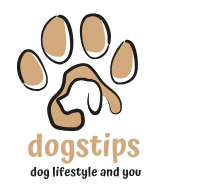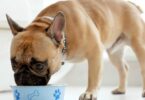Did you know over 30% of service animals in the U.S. come from breeds known for their intelligence and loyalty? This crossbreed, blending two of America’s most beloved working dogs, often leads the pack in these vital roles.
Combining traits from two iconic retrievers, this hybrid thrives as both a family companion and a dedicated helper. Their balanced temperament—playful yet focused—makes them ideal for households, therapy work, or assisting individuals with disabilities.
What sets these pets apart? They inherit the Labrador’s adaptability and the Golden Retriever’s gentle patience. This creates a versatile companion suited for active adventures or quiet evenings at home.
In this guide, you’ll discover:
• Key physical features and energy levels
• Training strategies that align with their eager-to-please nature
• Health considerations unique to the breed combination
• Daily care routines to maximize their well-being
Whether you’re a first-time owner or a seasoned pet parent, understanding this crossbreed’s needs ensures a fulfilling partnership. Let’s explore how to nurture their potential while addressing challenges head-on.
Overview of This Unique Hybrid Breed
Purposefully developed to combine the best traits of two iconic breeds, this hybrid has become a modern favorite for both families and professionals. Breeders initially crossed these retrievers to create a versatile companion capable of excelling in service roles while maintaining a warm family presence.
Breed Origins and Heritage
The hybrid’s roots trace back to working dogs in North America during the late 20th century. Both parent breeds—the Labrador and Golden Retriever—were originally developed for demanding jobs like hunting and water retrieval. Their offspring inherit this strong work ethic, making them natural candidates for search-and-rescue missions or therapy dog programs.
Why It Remains a Popular Choice
Families appreciate this crossbreed’s ability to adapt to various living situations. Their intelligence ranks among the highest of all dog types, simplifying training for first-time owners. Service organizations frequently select these hybrids for their balanced energy levels and innate desire to please.
Consistent demand stems from their dual-purpose nature. They transition seamlessly from playtime with children to focused assistance tasks. This flexibility, combined with low aggression tendencies, explains why many consider them ideal companions for active households.
Distinctive Appearance and Coat Characteristics
Visual appeal meets practicality in this crossbreed’s physical traits. Their appearance reflects a harmonious blend of working-dog heritage and family-friendly charm, designed for both functionality and companionship.
Color Variations and Build
Expect a spectrum of hues influenced by parentage. Common shades range from rich chocolate to pale cream, with some displaying golden undertones. Most stand 21-24 inches tall at the shoulder, weighing 60-80 pounds—ideal for active households.
Their athletic frame combines strength with agility. Broad chests and muscular legs suit swimming or hiking, while otter-like tails aid in water navigation. These proportional features mirror classic retriever standards.
Grooming Needs and Shedding Patterns
A double-layered coat requires consistent care. The dense undercoat sheds seasonally, with heavier “coat blowouts” during spring and fall. Weekly brushing becomes essential to manage loose fur and prevent matting.
Use a slicker brush for the topcoat and undercoat rake for deeper layers. Bathing every 6-8 weeks maintains natural oils—overwashing can strip their weather-resistant protection. Trim nails monthly to support joint health.
Owners should anticipate moderate year-round shedding. Investing in a quality vacuum and deshedding tool simplifies maintenance. Regular grooming sessions also strengthen the bond between pet and caregiver.
Temperament, Personality, and Family Dynamics
What makes a household companion truly irreplaceable? This crossbreed’s natural warmth and adaptability shine brightest in family settings. Their outgoing personality creates instant connections, whether greeting new neighbors or comforting a toddler.
Child-Friendly and Social Nature
These hybrids thrive in homes with children, displaying patience during play and vigilance during quiet moments. Their retriever parent heritage contributes to gentle mouth habits—perfect for families teaching kids about pet interactions.
Strangers often become fast friends thanks to the dog’s wagging tail and relaxed posture. Socialization from puppyhood enhances this innate friendliness, ensuring confidence in parks or crowded spaces.
Behavioral Patterns and Adaptability
Intelligence meets eagerness in these quick learners. They excel in assistance roles because they anticipate needs while maintaining calm focus. Training sessions succeed best with positive reinforcement—treats or praise work wonders.
Daily life demands structure. A mix of playtime, walks, and mental challenges prevents boredom. Though adaptable to apartments or farms, they require consistent routines to feel secure.
Affection flows freely with this breed. Expect morning cuddles and loyal companionship during movie nights. Their devotion strengthens family bonds, making every member feel cherished.
Health Considerations and Common Genetic Issues
Protecting your companion’s well-being starts with understanding inherited risks. These hybrids often face health challenges from both parent breeds, requiring proactive care to maintain quality of life.
Hip Dysplasia, Elbow Dysplasia, and Eye Conditions
Joint issues rank among the most frequent health problems in this crossbreed. Hip dysplasia causes abnormal hip socket formation, leading to limping or difficulty standing. Elbow dysplasia shows similar symptoms in front legs, often appearing by age two.
Eye conditions like progressive retinal atrophy can develop silently. This degenerative disorder gradually impairs vision, making early vet screenings critical. Annual eye exams help detect retinal atrophy before noticeable symptoms emerge.
Preventive Measures and Vet Checkups
Regular vet visits form the foundation of prevention. Schedule checkups every six months to monitor joint health and eye function. Maintain lean body weight through measured meals and low-impact exercises like swimming.
Reputable breeders provide health clearances for both parent breeds. Always request documentation proving hips and eyes were tested before breeding. Pair this with a consistent healthcare routine to minimize genetic risks.
Balanced nutrition supports bone and joint development. Choose foods with glucosamine and omega-3 fatty acids. Combine this with controlled exercise to strengthen muscles without overstressing growing joints.
Nutrition, Feeding, and Dietary Guidelines
A well-balanced diet is the cornerstone of your hybrid’s vitality and longevity. These energetic companions require meals that support their active lifestyle while preventing weight-related health issues. Let’s break down how to fuel their bodies effectively at every life stage.
Balanced Diet and Portion Control
High-quality proteins like chicken or salmon should dominate your pet’s food bowl. Pair these with complex carbohydrates such as sweet potatoes and omega-rich fats for sustained energy. Active adults typically need 2.5-3 cups daily, split into two meals—adjust portions if your dog participates in strenuous activities during puppy growth phases.
Portion management prevents obesity, a common issue in crosses with hearty appetites. Use a measuring cup rather than eyeballing servings. For seniors or less active pets, reduce calories by 10-15% while maintaining nutrient density.
Look for commercial foods specifically formulated for medium-to-large active breeds. These often contain glucosamine for joint health—a smart choice given the parent breeds’ predisposition to hip issues. Always provide fresh water, changing bowls twice daily to encourage proper hydration.
Supplements like fish oil can enhance coat quality, but consult your vet before adding extras. Remember: nutritional needs shift from puppyhood through adulthood. Regular weight checks help tailor feeding plans to your dog’s evolving metabolism.
Training, Exercise, and Mental Stimulation
Smart companions thrive when their physical and cognitive needs align. This energetic hybrid requires structured routines that channel their natural enthusiasm into positive behaviors while preventing destructive habits.
Effective Training Techniques
Start teaching basic commands as early as 8 weeks old. Reward-based methods using small treats or enthusiastic praise yield fast results with these eager learners. Consistency proves crucial—daily 10-minute sessions work better than weekly marathons.
Advanced training for assistance roles requires professional guidance. Many owners enroll in certified therapy dog programs that build focus during distractions. Always end sessions on a positive note to maintain their love for learning.
Engaging Outdoor Activities and Exercise Regimens
Plan 60-90 minutes of daily movement split into multiple sessions. Morning swims leverage their water-loving heritage, while evening fetch games satisfy retrieval instincts. Weekend hikes provide new smells and terrain challenges.
Mental stimulation matters as much as physical exertion. Rotate puzzle toys weekly to prevent boredom. Hide treats in snuffle mats or teach scent-tracking games. These activities sharpen problem-solving skills while reinforcing your bond.
Remember: A tired dog is a happy dog. Combine structured exercise with creative brain games to help your companion shine in family life or specialized service roles.
Grooming Essentials and Coat Maintenance
Proper coat care transforms grooming from chore to bonding ritual. This crossbreed’s dense double layer demands strategic maintenance to stay healthy and reduce shedding. Let’s break down methods that keep their fur gleaming while strengthening your connection.
Daily Brushing and Bathing Tips
Invest in two tools: a slicker brush for surface tangles and an undercoat rake for deeper layers. Brush 10 minutes daily during shedding seasons, focusing on chest and leg areas where mats form. For puppies, introduce gentle brushing early to build positive associations.
Bathe every 6-8 weeks using oatmeal-based shampoos. Overwashing strips natural oils that protect their water-resistant fur. After swimming, rinse with fresh water to prevent skin irritation from chlorine or salt.
Trim nails monthly using guillotine-style clippers. Check ears weekly for redness—clean with vet-approved solution on cotton pads. Dental chews help maintain oral health between professional cleanings.
Puppies need extra attention as their adult coat develops. Gradually increase brushing time as their fur thickens. Use detangling sprays for soft golden retriever-like feathering behind ears and legs.
Consistency prevents skin issues. Mark grooming sessions on your calendar and pair them with treats. This routine minimizes loose hairs on furniture while keeping their iconic retriever-labrador coat radiant.
Essential Care Tips for the Black Lab and Golden Retriever Mix
Consistency forms the foundation of care for these energetic companions. A predictable schedule reduces anxiety while reinforcing positive behaviors, creating harmony between pets and families. Owners who master daily rhythms often report fewer behavioral challenges and stronger bonds with their four-legged friends.
Establishing a Consistent Routine
Start with fixed meal times to regulate digestion and energy levels. Feed your pet at 7 AM and 5 PM, adjusting portions based on activity. Pair meals with 30-minute walks to create natural patterns.
Exercise windows should mirror natural energy peaks—morning and late afternoon. Alternate swimming sessions with puzzle games to engage both body and mind. Always schedule vet checkups quarterly during the first year, then biannually.
Addressing Breed-Specific Needs
Monitor joint health through low-impact activities like treadmill walks. Watch for limping in puppies, which could signal early hip issues. Brush coats three times weekly using curved slicker brushes to manage shedding.
Socialization proves critical during the first six months. Introduce new people and environments gradually to build confidence. Families should rotate care tasks among members to strengthen the pet’s trust in all household members.
Keep training sessions under 15 minutes to match attention spans. Use high-value rewards like freeze-dried liver for best results. These strategies help manage inherited traits while promoting lifelong wellness.
Keeping Your Pet Happy and Healthy Over Time
A thriving companion results from daily dedication and informed choices. Tailor activities to their life stage—puppies benefit from short play bursts, while seniors thrive with gentle walks. Adjust food portions as metabolism slows, opting for formulas rich in joint-supporting nutrients.
Regular vet visits catch early signs of inherited conditions. Annual eye exams help monitor retinal health, and weight checks prevent strain on joints. For breeds prone to hip concerns, consider orthopedic beds or ramps to ease movement.
Mental engagement remains crucial at every age. Rotate puzzle toys and introduce scent games to sharpen instincts. Pair physical exercise with training refreshers to maintain cognitive agility.
Nourish bonds through consistent routines and affection. Ensure fresh water access and brush coats weekly to minimize shedding. With proactive care, your loyal friend will reward you with years of unwavering companionship.
FAQ
How much shedding should I expect with this crossbreed?
The Labrador Golden Retriever mix inherits a double coat that sheds moderately year-round, with heavier seasonal shedding. Weekly brushing and occasional baths help manage loose fur and keep their coat healthy.
What’s the average lifespan of this hybrid?
With proper care, these dogs typically live 10–12 years. Regular vet visits, a balanced diet, and preventive care for genetic conditions like hip dysplasia can support longevity.
Are they suitable for homes with young children?
Yes! Their gentle, patient nature makes them excellent family companions. Early socialization ensures they interact safely with kids, though supervision is always advised during playtime.










Leave a Comment